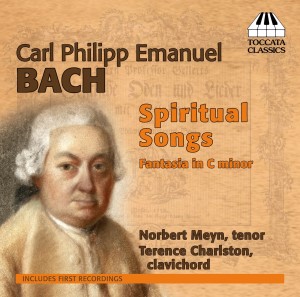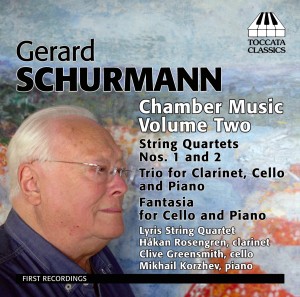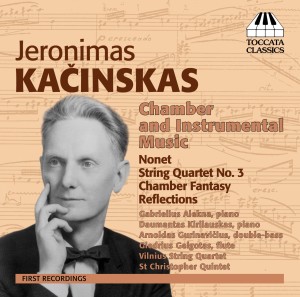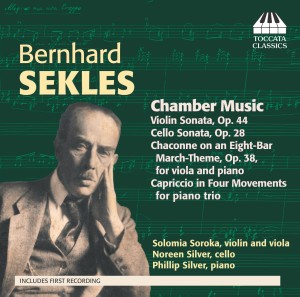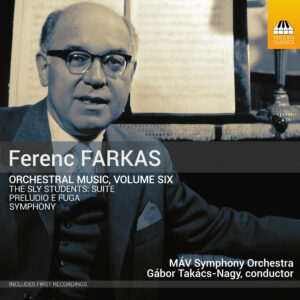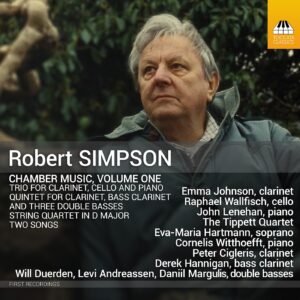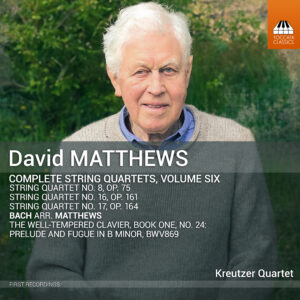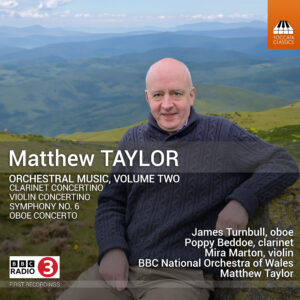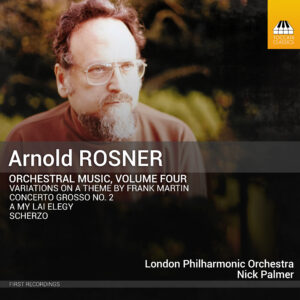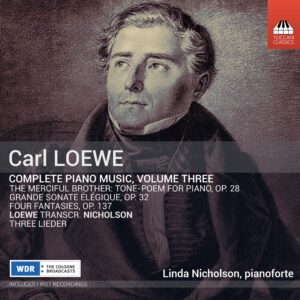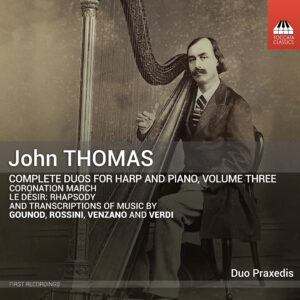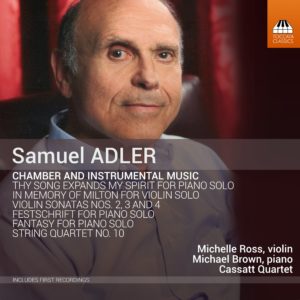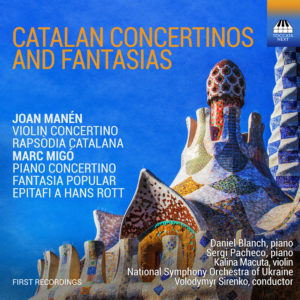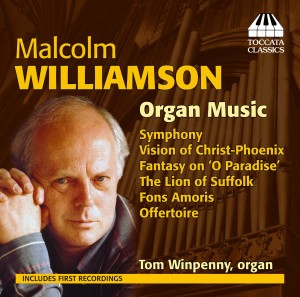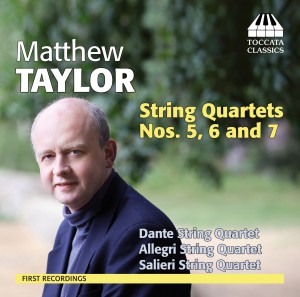Search Results for "The Black Alley Newty Ping" – Page 15
Showing results for black alley net ping
Freda Swain: Piano Music, Volume One
The English composer-pianist Freda Swain (1902–85) left a huge legacy of music that was largely unknown even while she was alive. Her compositions – hundreds of them, in a series of large boxes – found their way to the Swiss pianist Timon Altwegg, who begins his survey of her piano music with Swain’s three mighty sonatas. They are astonishing discoveries: big-boned, virtuosic pieces, full of wild energy, crossing from late Romanticism to a more modern idiom – from Rachmaninov to Bartók, so to speak – and with Bax’s fondness for Celtic seascapes and a hint of Debussyan Impressionism.
Timon Altwegg, piano
C. P. E. Bach: Spiritual Songs
C. P. E. Bach's two collections of religious songs, published in 1758 and 1780-81, were among the most popular eighteenth-century Lieder publications. Here a selection of them is recorded for the first time with complete texts and accompanied with the clavichord, the composer's favourite instrument, underlining their intimate nature, intended more for private devotional use than for public performance. The recording includes the 'Hamlet Fantasy' that resulted when the poet Heinrich Wilhelm von Gerstenberg imposed his paraphrase of Hamlet's soliloquy on one of C. P. E. Bach's keyboard pieces.
Norbert Meyn, tenor
Terence Charlston, clavichord
Gerard Schurmann: Chamber Music Volume Two
The Anglo-Dutch composer Gerard Schurmann, born in the East Indies in 1924 and based in the USA since 1981, first made his mark in Britain in the 1940s and '50s, as a pianist and composer, particularly of chamber music and, later, of film scores. His concert output is intense, passionate, tightly argued and charged with energy, but also infused with lyricism, as these four works demonstrate.
Lyris Quartet, string quartet
Håkan Rosengren, clarinet
Clive Greensmith, cello
Mikhail Korzhev, piano
Jeronimas Kačinskas: Chamber and Instrumental Music
The Lithuanian composer Jeronimas Kačinskas (1907-2005) is one of the lost radicals of twentieth-century music. He abandoned traditional syntax in favour of an atonal athematicism, whereby the music is in constant evolution, with freely pulsing rhythms and melodic lines that branch forward like tendrils. His lyrical but tightly woven Nonet was well received in the 1930s, but when Kačinskas fled Lithuania from the approaching Russians in 1944 he had to abandon almost all his scores. Only with the collapse of the Soviet empire could the work be reconstructed — and the composer return home in triumph.
Giedrius Gelgotas, flute
Arnoldas Gurinavičius, double-bass
Vilnius String Quartet, string quartet
St Christopher Quintet, wind quintet
Gabrielius Alekna, piano
Daumantas Kirilauskas, piano
Bernhard Sekles: Chamber Music
Bernhard Sekles (1872-1933) was one of the leading figures in German music in the first decades of the twentieth century, prominent as composer, educator and administrator. In 1928, as director of the Hoch Conservatorium in Frankfurt, he established the first academic programme in jazz studies, an act of courage and conviction that unleashed furious attacks from the Nazi press. His own music, banned during the Third Reich, has been virtually forgotten, although he composed in all major genres, including opera, symphony, lieder and chamber music. As the works on this recording illustrate, Sekles' music finds room for diverse elements — including Neoclassicism, Brahmsian Romanticism and jazz — and can be refreshingly quirky.
Solomia Soroka, viola, violin
Noreen Silver, cello
Phillip Silver, piano
Ferenc Farkas: Orchestral Music, Volume Six
Ferenc Farkas (1905–2000) is often viewed as a gifted miniaturist, sifting through Baroque and popular Hungarian sources to produce glittering orchestral dances of infectious energy. That Farkas does indeed exist, as in the suite from the ballet The Sly Students, but this album also shows an entirely different side to his musical personality. His Preludio e Fuga finds him experimenting with dodecaphony – but he offered a caution: ‘In the twelve-tone theme of the fugue, I did not use Schoenberg’s orthodox model but a softer form, more euphoric, with a rounder and more attractive sonority – I am thinking of works by Luigi Dallapiccola or […] Frank Martin’. His only symphony was a victim of Communist orthodoxy, so severely criticised at Party meetings that Farkas shelved the score. This first complete recording reveals a work that is both big-boned and big-hearted – one of the finest of all Hungarian symphonies.
MÁV Symphony Orchestra
Gábor Takács-Nagy, conductor
Robert Simpson: Chamber Music, Volume One
Most of the chamber music of Robert Simpson (1921–97) was recorded by Hyperion in the 1980s and ‘90s, but there remained some gaps in that discography. The Robert Simpson Society has sponsored two albums to plug them, this first one including an early string quartet and two songs that came to light only after the composer’s death. In later life Simpson used to say that poems good enough to set didn‘t need music – but these two youthful essays prove that he was already a master. Simpson wrote the D major string quartet as a student at Durham; an examiner described it as ‘fearless’. The two mature works – vintage Simpson – bring his sense of symphonic momentum into the clarinet repertoire.
The Tippett Quartet
Emma Johnson, clarinet
Raphael Wallfisch, cello
John Lenehan, piano
Eva-Maria Hartmann, soprano
Cornelis Witthoefft, piano
Peter Cigleris, clarinet
Derek Hannigan, bass clarinet
Will Duerden, double bass
Levi Andreassen, double bass
Daniil Margulis, double bass
David Matthews: Complete String Quartets, Volume Six
The American critic Robert Reilly described the music on Volume One of this cycle of the complete string quartets of David Matthews (b. 1943) as ‘some of the most concentrated, penetrating writing for this medium in the past 30 years or more. It is musical thinking of the highest order and quartet writing in the great tradition of Beethoven, Bartók, Britten, and Tippett’. The three works in this sixth volume of Matthews’ string quartets cover a quarter of a century but share the same basic features, not least a mastery of counterpoint, an impassioned lyricism, a sublimated hint of folksong and occasionally a sly sense of humour, all deployed to touch something essential in the listener. Matthews begins his booklet note with this release by saluting ‘my now nearly 30-year relationship with the Kreutzer Quartet, which has been as invaluable to me as Shostakovich’s with the Beethoven Quartet, or Beethoven’s with the Schuppanzigh Quartet’.
Kreutzer Quartet
Matthew Taylor: Orchestral Music, Volume Two
The music of the English composer Matthew Taylor (b. 1964) manages both to honour tradition and pull out some surprises. Clearly in the tradition that leads from Carl Nielsen through Robert Simpson, the works here observe Nielsen’s fondness for dignity of expression, the occasional hint of power tempered by an almost Mendelssohnian lightness of touch – and, here and there, a note of levity: the Sixth Symphony, after all, is dedicated to the memory of Sir Malcolm Arnold. The three concertante works are performed here by musicians whose playing Taylor particularly admires.
James Turnbull, oboe
Poppy Beddoe, clarinet
Mira Marton, violin
BBC National Orchestra of Wales
Matthew Taylor, conductor
Arnold Rosner: Orchestral Music, Volume Four
The musical language of the New York-based Arnold Rosner (1945–2013) clothes the modal harmony and rhythm of pre-Baroque polyphony in rich Romantic colours, producing a style that is instantly recognisable and immediately appealing. This fourth Toccata Classics album of his orchestral music opens with an engaging and energetic early Scherzo and a Concerto Grosso that has something of the dignified reserve of the Swiss composer Frank Martin, whom Rosner much admired – as the broadly expressive Variations on a Theme by Frank Martin go on to show. Rosner’s A My Lai Elegy, a symphonic poem inspired by a massacre of civilians in Vietnam, has few equals in the orchestral repertoire: it veers from profound sadness to wild, freewheeling anger – protest music at its grandest and most passionate.
London Philharmonic Orchestra
Nick Palmer, conductor
Carl Loewe: Complete Piano Music, Volume Three
Known in his lifetime as ‘the north German Schubert’, Carl Loewe (1796–1869) is remembered today chiefly as a composer of songs and ballads. Yet there is a considerable body of piano music that is strikingly innovative in content, expression and harmony, containing the germs of ideas later taken up by composers such as Wagner and Liszt. Loewe was unquestionably a brilliantly original talent, a major figure in ushering in the Romantic era – with the remarkable Four Fantasies of 1854 heard here ‘documenting’ in music the contemporary emigration of German families to the United States. This third volume of Linda Nicholson’s survey of his piano music on historical instruments concludes its first-ever complete recording on any kind of piano.
Linda Nicholson, Erard piano, c. 1839
John Thomas: Complete Duos for Harp and Piano, Volume Three
Harpist to Queen Victoria, the Welsh composer John Thomas (1826–1913) also wrote prolifically for his own instrument, both for solo harp and for duos of two harps or harp and piano – a combination where the different sounds of the two instruments enhance the clarity of the texture. Thomas’ original works use the elegant Romantic style of his own day, but he also left a generous legacy of transcriptions, especially of operatic favourites. Although some of his music was intended for the Victorian drawing room, other pieces require a virtuoso technique – and all of it has a thoroughly engaging melodic appeal.
Duo Praxedis
Praxedis Hug-Rütti, harp
Praxedis Geneviève Hug, piano
Samuel Adler: Chamber and Instrumental Music
The works of Samuel Adler – born in Mannheim in 1928 but long since one of the leading figures of American music – are both modern and approachable: they blend an edgy angularity with long flights of lyrical melody, and are often informed with both a buoyant charge of energy and an impish sense of humour. This conspectus of his chamber and instrumental music covers almost sixty years of his activity as a composer and thus presents a kind of portrait in sound.
Michelle Ross, violin (Tracks 2–6, 9–11)
Michael Brown, piano (Tracks 1–4, 6–11)
Cassatt Quartet (Track 12)
Muneko Otani and Jennifer Leshnower, violins
Ah Ling Neu, viola
Elizabeth Anderson, cello
Catalan Concertinos and Fantasias
Most of the works by the two Catalan composers heard here – Joan Manén (1883–1971) and Marc Migó (b. 1993) – use material from their folk tradition, making the music fresh, immediate and direct, rather in the manner of Manuel de Falla. But there is also a loose connection with Vienna: Manén’s Violin ‘Concertino’ – an unusually modest label for a full-scale concerto – is something of a cousin to the Korngold Concerto; and Migó’s poignant Epitafi a Hans Rott was written in memory of a short-lived Austrian composer who was a close friend of Gustav Mahler.
Kalina Macuta, violin (Tracks 6 – 8)
Sergi Pacheco, piano (Tracks 9, 10)
Daniel Blanch, piano (Track 12)
National Symphony Orchestra of Ukraine
Volodymyr Sirenko, conductor
Malcolm Williamson: Organ Music
Malcolm Williamson (1931-2003), Master of the Queen's Music from 1975 until his death, was a gifted pianist and organist as well as a prolific composer. His music, which began to make an impact soon after his arrival in Britain from Australia in 1953, naturally includes a substantial number of works for the organ, among them the monumental Symphony of 1960. His writing for organ is strikingly powerful in its originality and its eclectic mix of styles, ranging from lyrical introspection to dazzling virtuosity.
Tom Winpenny, organ
Matthew Taylor: String Quartets Nos. 5, 6 and 7
Matthew Taylor's sense of musical architecture — extending the symphonic tradition of Sibelius and Nielsen into the modern age — can be felt in his chamber music no less than in his orchestral output. Though his String Quartets Nos. 5, 6 and 7 were written in close succession, they are fundamentally different in design and feeling. Quartet No. 5 adopts a pacifying process as a volatile Allegro unfolds into a spacious fugue before easing into a delicate lullaby. The core of the Sixth Quartet is a Romanza which Taylor wrote for his wife on their wedding. And the Classical clarity of the Seventh Quartet pays tribute to Haydn and Mendelssohn, two composers whom Taylor much admires.
Dante String Quartet, string quartet
Allegri String Quartet, string quartet
Salieri String Quartet, string quartet
Stay In the Know
JOIN THE TOCCATA NEWSLETTER
"*" indicates required fields
By visiting our site, you agree to our privacy policy regarding cookies, tracking statistics, etc.

